139 LP / The Welte Mignon Mystery Vol. 1: Enrique Granados
The Welte Mignon Mystery Vol. I
Enrique Granados
today playing his 1913 interpretations
Selected works by Granados
Tube Only / Transistorfrei
EAN/barcode: 4009850013914
Description
This is not an historical recording. Yet mysteriously the music is performed in an interpretation which is historically authentic down to the last detail. The key to this mystery is: the original performer was present at the recent recording session, but not physically: the music is heard on a modern Steinway. Never has music stored in the Welte-Mignon system sounded so "right" or so well. Thanks to TACET′s much-praised recording technique, and because the Welte-Mignon memory system and sound production mechanism have now been newly adjusted for the first time by the leading expert in the field - and are thus able to meet TACET′s requirements. (Welte-Mignon was invented in 1904.) The Welte-Mignon mystery can now speak to us without distortion.
4 reviews for 139 LP / The Welte Mignon Mystery Vol. 1: Enrique Granados
You must be logged in to post a review.

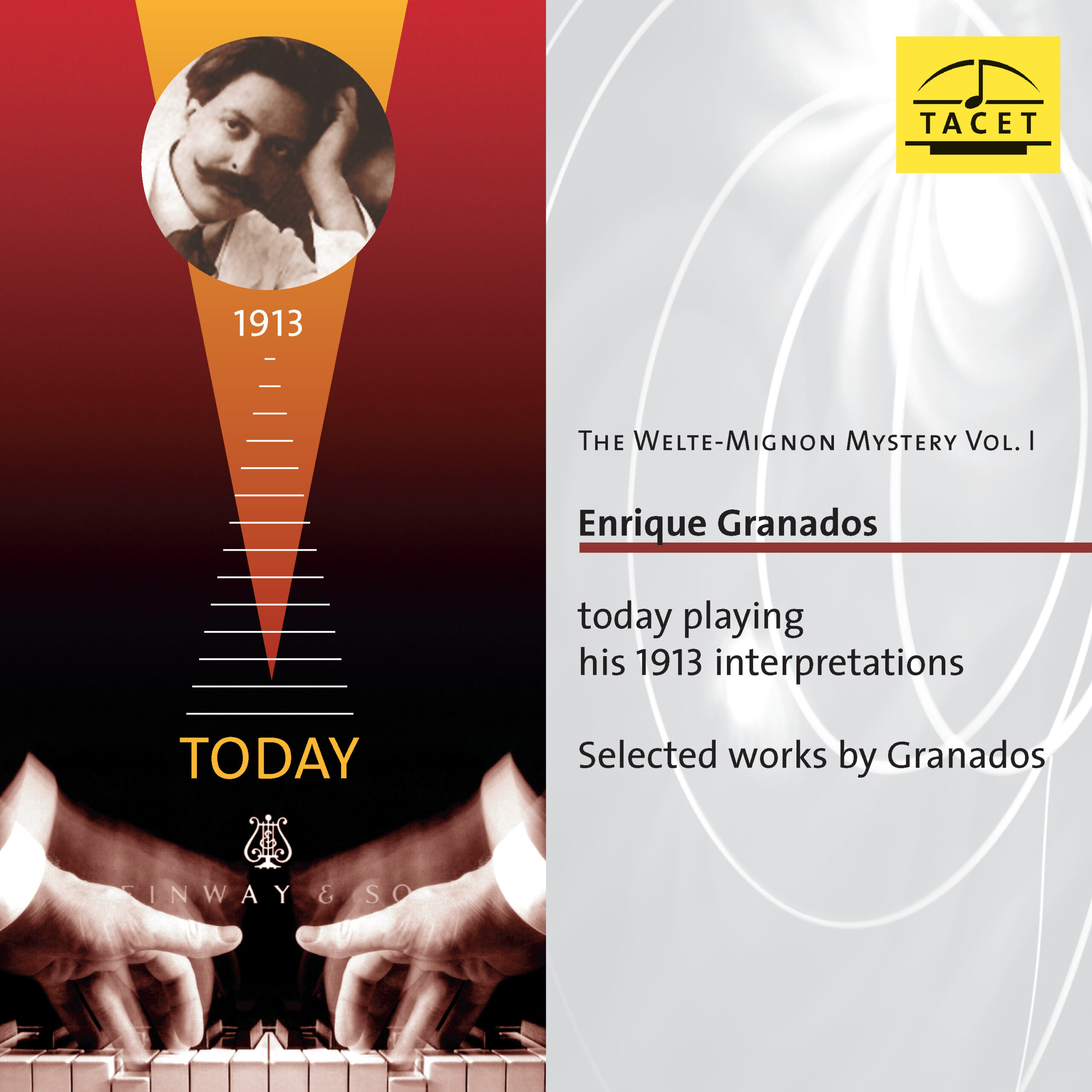

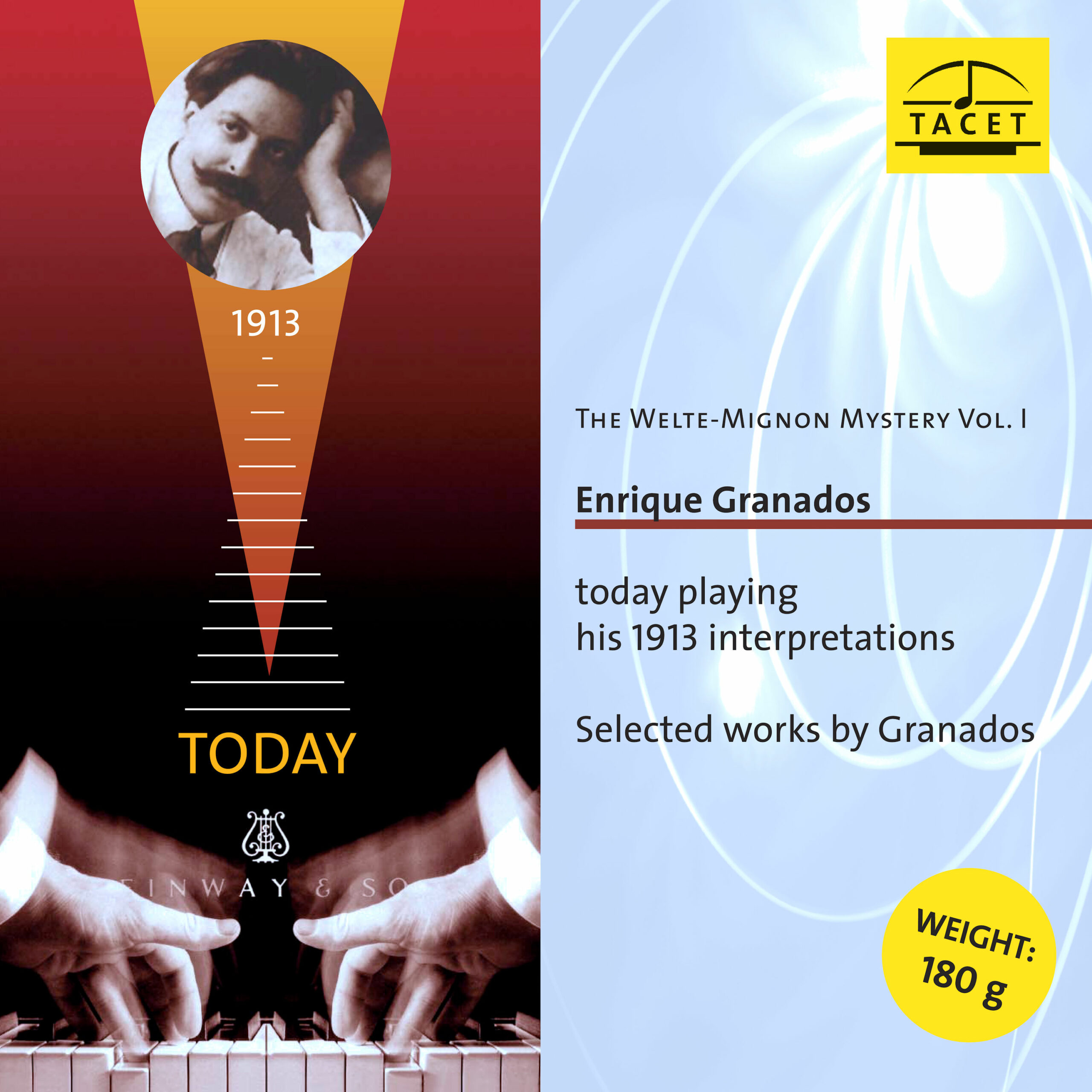
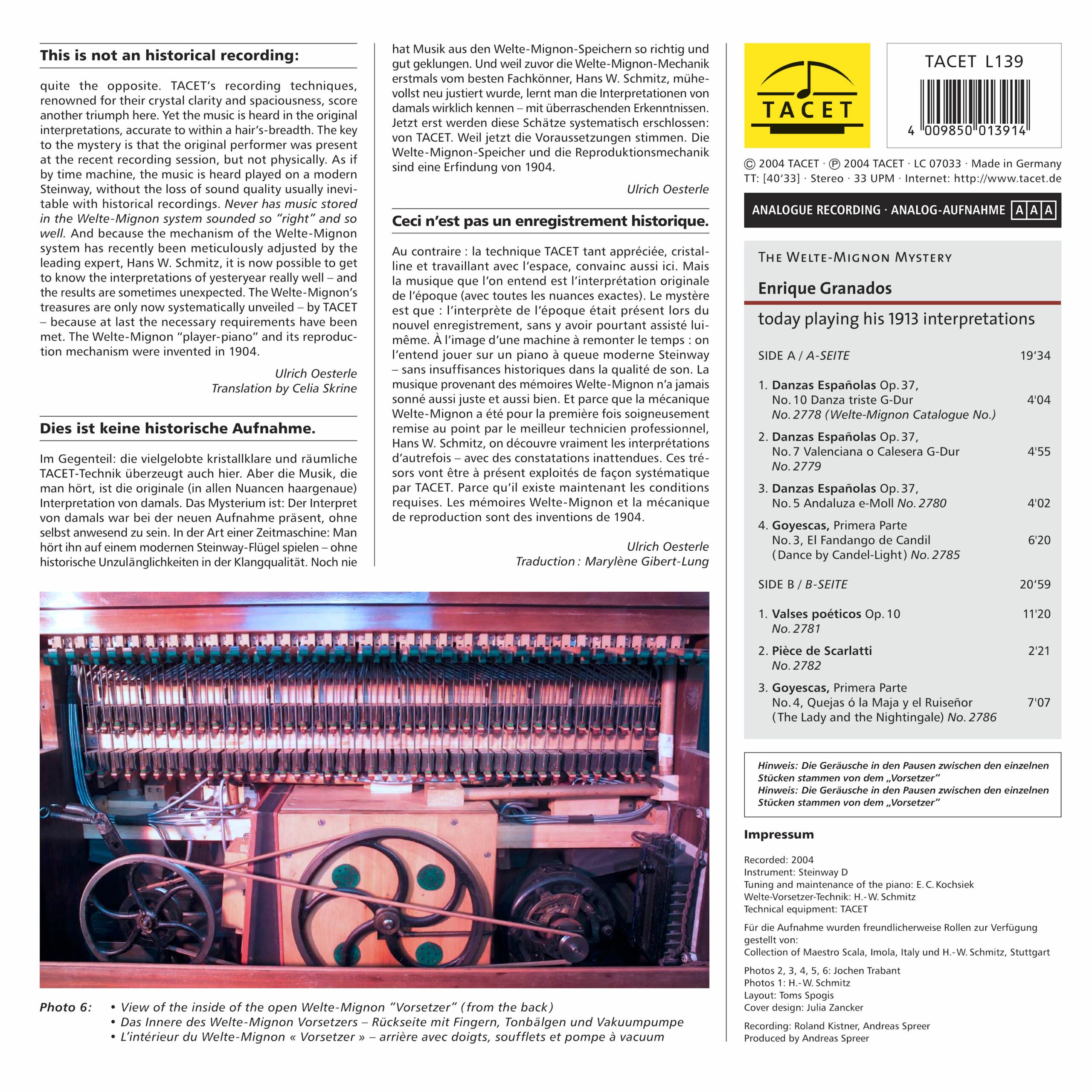
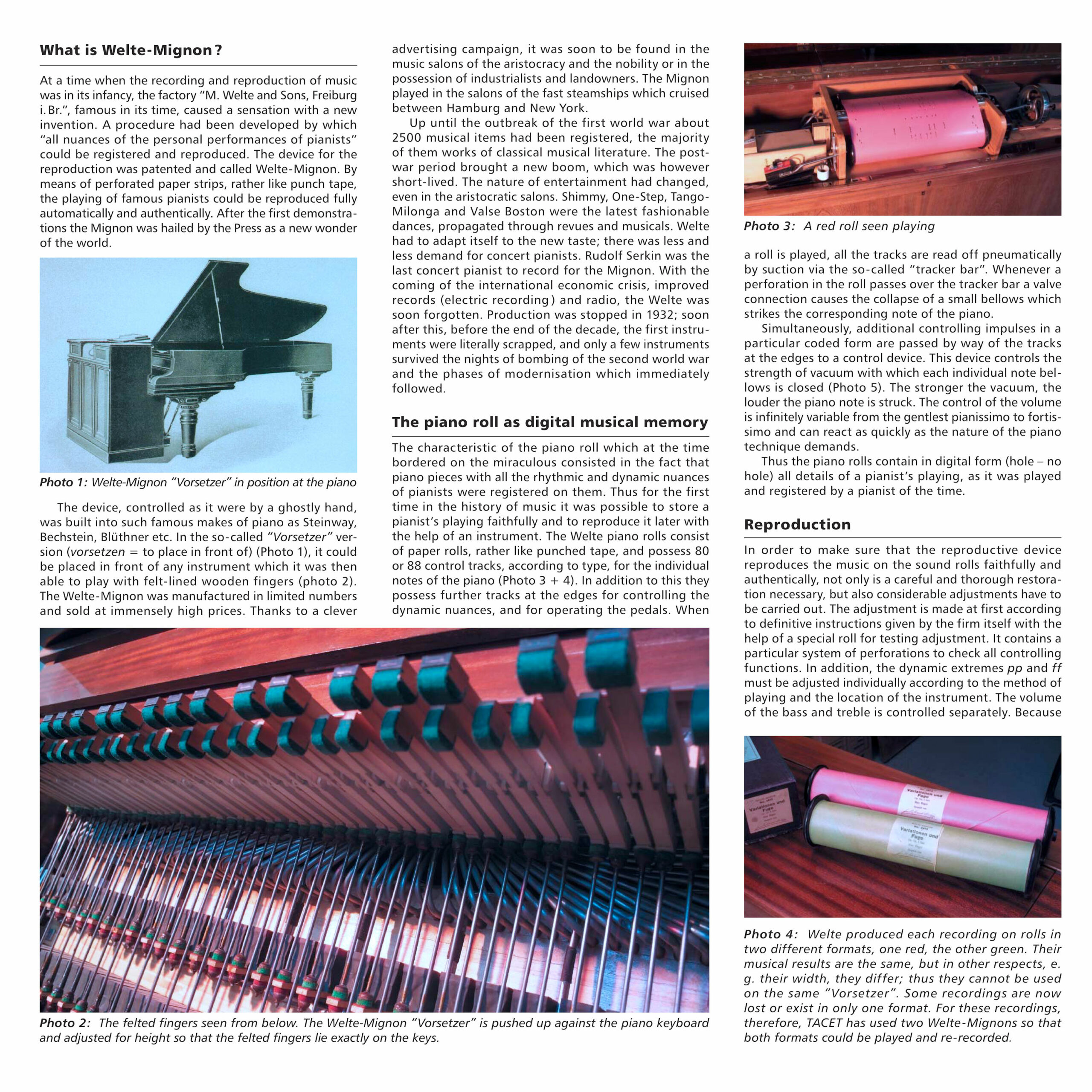
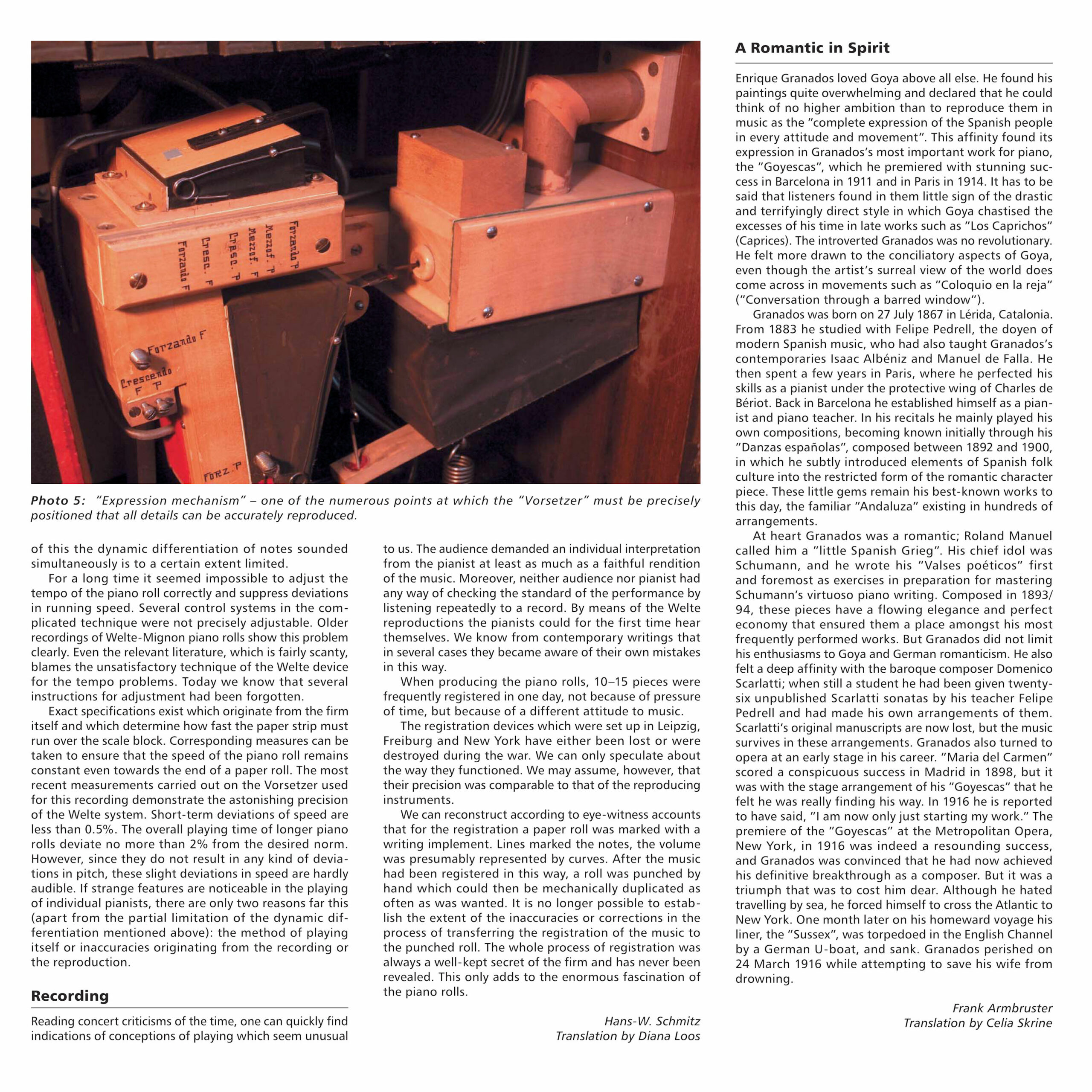
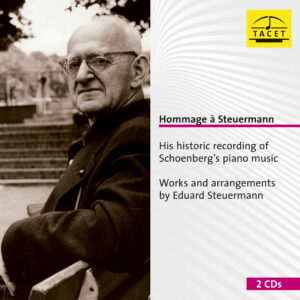
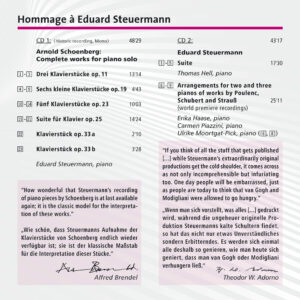

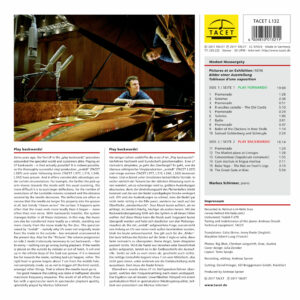

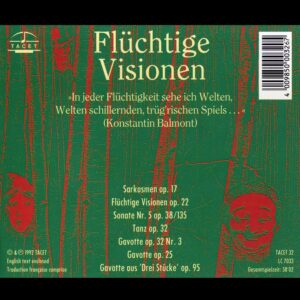

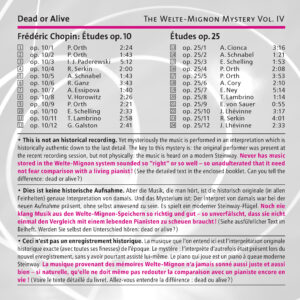
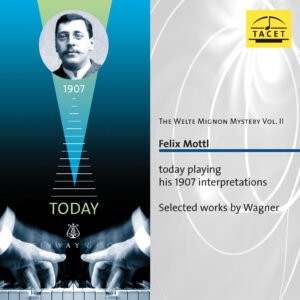
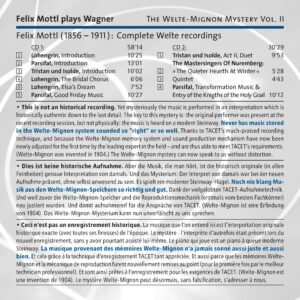
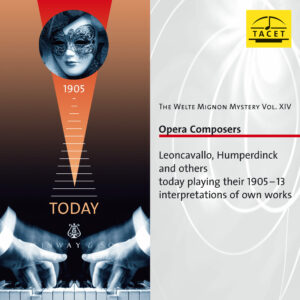
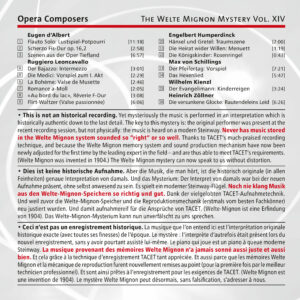
LP-Magazin –
Granados of the 20th century plays Granados in the 21st—magnificent!
Patent No. 162704, Class 51d: 'A device for mechanically playable keyboard instruments, enabling perfect gradation of key strike intensity.' This bureaucratic description masks one of the early 20th century’s most spectacular inventions: the Welte-Mignon reproducing piano. Unlike contemporary recording methods that distorted sound, inventor Edwin Welte sought to preserve the piano’s natural tone. His patent aimed to capture 'all nuances of rhythmic and dynamic expression, fully preserving the performer’s personal touch.' From 1904 to 1932, over 5,500 performances were encoded onto paper rolls by pianists and composers like Ferruccio Busoni, Artur Schnabel, Gustav Mahler, and the Spanish composer-pianist Enrique Granados—a pioneer who revitalized Spanish music by rooting it in his nation’s rich folklore. Beyond his iconic Danzas Españolas (1892), including the famed Andaluza, his masterpiece Goyescas (1911/12) stands out.
Tacet’s breakthrough? Since Welte-Mignon didn’t record sound but programmed it via perforated rolls, the music can be replayed on modern instruments with contemporary fidelity. Every interpreter grapples with a composer’s intent: Where to apply rubato? Are tempo markings absolute? How should accents sound? Thanks to Welte-Mignon and TACET, Granados himself provides the answers—resurrected to guide performances of his own works. This release is an invaluable treasure for musicology and a revelation for all music lovers!
akb
TACET –
Please also refer to the reviews of the CD-Version.
LP-Magazin –
Granados playing his own 1913 interpretations? Necromancy? Not at all. The magic word is Welte-Mignon—a complex mechanical system (and device) that made piano reproductions possible at a time when recording technology was still in its infancy. The played notes were converted into (quasi-digital) information, punched onto paper rolls sold as sound carriers. For playback, you needed not only these rolls but also a sinfully expensive vorsetzer (player mechanism) placed in front of the grand piano. Many artists discovered this way to preserve their own interpretations—including Enrique Granados, who in 1913 recorded a series of pieces that form the basis of this lovingly crafted 180-gram vinyl release. So while this is a reproduction of historical performances, it is not a historical recording. The TACET production, created in collaboration with Stuttgart collector Hans W. Schmitz—who resolved many ambiguities in reconstructing such playback systems—uses a perfectly restored Welte-Mignon system, a Steinway D grand, and purely analog recording equipment to deliver a magnificent Granados experience. The presented works (…) reveal how crucial timbre was to Granados—not as a romantic dreamer but as a precise composer who used it as both a compositional tool and a means of expression. Brilliant!
vf
Connaisseur Mailorder Schallplattenversand –
--> original review
Granados (1867–1916!) plays Granados—and yet this is not some crackling, hiss-filled historical recording, but a pristine 2004 production, crafted with the label’s signature tube equipment and pure analog warmth. Or is it? Strictly speaking, digital technology is involved—just not the kind you’d expect. Mechanical digital, to be precise. Here’s the clarification: What we’re hearing is a 1913 paper-roll recording for Welte-Mignon’s mechanical playback devices (called vorsetzer), which could be ‘connected’ to concert grands (Bechstein, Blüthner—in this case, a large Steinway). Developed by Freiburg’s M. Welte & Söhne, this highly complex system was a sensation in the early 20th century: It reproduced the greats of piano without quality loss, capturing even the finest nuances of touch through intricate mechanics. At its core? A long, perforated paper strip—and here we do enter digital territory: hole/no hole, zero/one. The system isn’t without controversy among musicologists, who often question its precision in tempo and dynamics. And listening to previous releases of these devices on various labels, such skepticism seems justified. But Tacet has pulled off a coup: They restored two vorsetzer (the rolls came in two widths) using long-lost manufacturer documents, finally solving the critical issue of exact calibration. Given that contemporaries—musically trained witnesses—were consistently astonished by the accuracy of Welte pianos, and that even great pianists of the era used them to refine their technique, we can assume: This is as close as we’ll get to Granados’ true sound. And thanks to Tacet, this revelation isn’t confined to the digital realm—it’s here, in glorious analog.